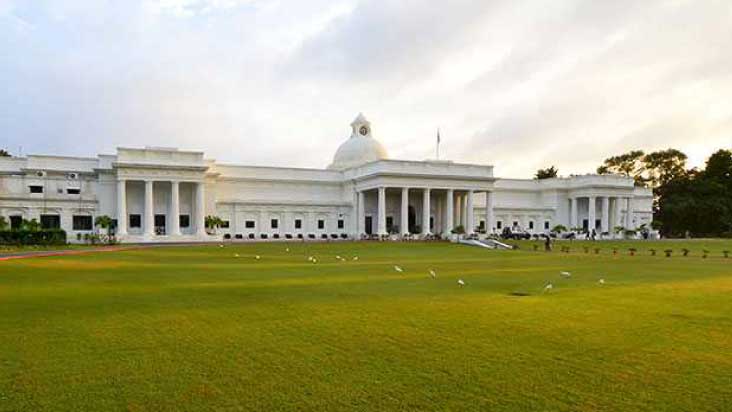Data Analytics Popular Algorithms Explained
Data analytics is constantly evolving, almost all manual repetitive tasks are automated, and some are complex. If you are in the profession of big data, a data scientist, or from the field of machine learning, understanding the functions of these algorithms would be of great advantage.
Continuing the earlier blog, below are a few popular algorithms commonly used by data scientists and machine learning enthusiasts. The headings might differ slightly in terms of the terminology of the algorithms, but here we have tried to capture the essence of the model and technique.
Linear Regression
Imagine you have many logs to stack together from the lightest to the heaviest, however you cannot weigh each log, you need to do this based on appearances, the height and the circumference of the log, only using the parameters of the visual analysis, you should arrange them. In other words, Linear Regression establishes a relationship between independent and dependent variables by arranging them to a line. Another example would be modelling the BMI of individuals using weight. You should use linear regression if there is a possible relationship or some sort of association between variables, if not then applying this algorithm will not provide a useful model.
Logistic Regression
Like any other regression, logistic regression is a technique to find an association between a definite set of input variables and an output variable. But in this case, the output variable would be a binary outcome, i.e. 0/1, Yes/No, e.g., if you want to assess, will there be traffic at Colaba, the output will be a specific Yes or No. The probability of traffic jams in Colaba will be dependent on time, day, week, season etc…, through this technique you can find the best fitting model that will help you understand the relationship between independent attributes and traffic jam, incidence rates, and the likelihood of an actual jam.
Clustering
This is an unsupervised learning algorithm where a data set is clustered into unique groups. So if you have a database of 100 customers, you can internally group them into different clusters or segments based on variables. Suppose it’s a customer database that you are working on. In that case, you can cluster them basis, gender, demographics, purchasing behaviour etc…, This is unsupervised as the outcome is unknown to the analyst. The algorithm decides the outcome, and an analyst does not train the algorithm on any past input. There is no right or wrong solution in this technique, business usability decides the best solution. There are two types of clustering techniques, Hierarchical, and Partitional. Some also refer to clustering as Unsupervised Classification.
Decision Trees
As the name suggests, decision trees represent a tree-shaped visual, which one can use to reach a desired or a particular decision by simply laying down all possible routes and their consequences or occurrences. Like a flow chart for every action, one can interpret the reaction to selecting the option.
K-Nearest Neighbors
The data science course uses this algorithm to solve classification problems, although it can also be used to solve regression problems. This algorithm is very simple, it stores all available cases, and then classifies any new cases by taking a vote from its K-Neighbours. The new case is assigned to the class with the most common attributes. An analogy to understand this would be, the background checks performed on individuals to gather relevant information.
PCA
The main objective of the Principal Component Analysis is to analyse the data to identify patterns and find patterns, to reduce the dimensions of the dataset with minimal loss of information. The aim is to detect the correlation between variables. This linear transformation technique is common and used in numerous applications, like in stock market predictions.
Random Forest
In the random forest, there is a collection of decision trees, hence the term ‘Forest’, here to classify a new object based on attributes, each tree gives a classification and that tree votes for that class. And overall the forest chooses the classification having the most votes, so in the true sense every tree votes for a classification.
Time Series / Sequencing
Time series is an algorithm that provides regression algorithms that are further optimized for forecasting continuous values, like for example, the product sales report, over time. This model can predict trends based on the original dataset used to create the model. To add new data to the model, you must make a prediction and automatically integrate the new data in the trend analysis.
Text Mining
The objective of the text mining algorithm is to derive high-quality information from the text. It is a broad term covering various techniques to extract information from unstructured data. Many text mining algorithms are available to choose from based on the requirements. For example, first is the Named Entity Recognition, where you have the Rule-Based Approach, and the Statistical Learning Approach. Second is the Relation Extraction, which has the Feature Based Classification, Kernel Method.
ANOVA
One-Way-Analysis of Variance is used to analyse if the mean of more than two dataset groups is significantly different from each other. For example, suppose a marketing campaign is rolled out on 5 different groups, where an equal number of customers are present within the same group. In that case, the campaign manager needs to know how differently the customer sets are responding so that they can make amends and optimise the intervention by creating the right campaign. The Analysis Of Variance works by analysing the variance between the group to variance within the group.
Optimise your knowledge by understanding these algorithms intensely to flourish in data science by applying for a dedicated data science course.
Frequently Asked Questions
What problem do data scientists solve?
Data scientists are crucial in addressing real-world challenges across diverse sectors and industries. In healthcare, their expertise is harnessed to create tailored medical solutions, enhance patient results, and cut healthcare expenses. This illustrates just one facet of how data science is applied to solve practical problems and make a positive impact.
What data scientists work?
Data scientists employ statistical methods to gather and structure data, showcasing their adeptness in problem-solving. Their responsibilities extend to devising solutions for challenges arising in data collection, cleaning, and the development of statistical models and algorithms. This underscores the importance of problem-solving skills in their multifaceted role.
What do I need to know before joining a data science course?
To begin as a data scientist, one must acquire skills in data wrangling, become proficient in organizing and structuring data, grasp essential concepts such as predictive modelling, and master a programming language. Additionally, developing a working familiarity with diverse tools and datasets is crucial. Ultimately, the goal is to extract actionable insights from the information.








